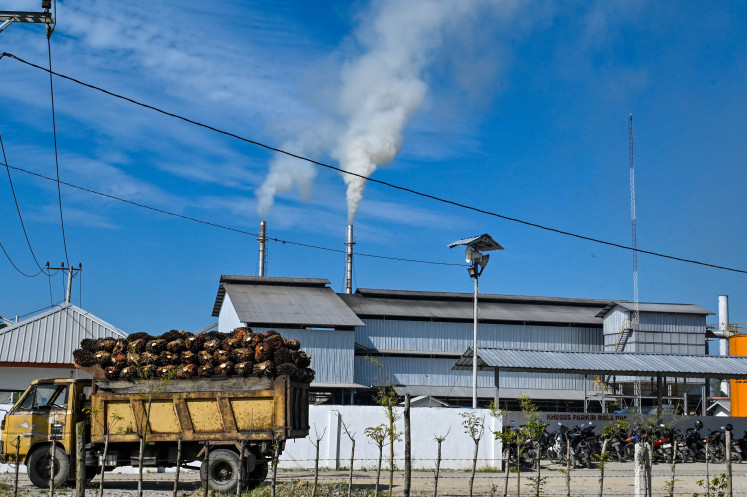Popular Reads
Top Results
Can't find what you're looking for?
View all search resultsPopular Reads
Top Results
Can't find what you're looking for?
View all search resultsFalling inflation paves way for rate cut
Consumer prices are expected to have dropped in February, providing more room for Bank Indonesia (BI) to further cut its key rate to help revive the countryâs sluggish economy, economists say
Change text size
Gift Premium Articles
to Anyone
C
onsumer prices are expected to have dropped in February, providing more room for Bank Indonesia (BI) to further cut its key rate to help revive the country's sluggish economy, economists say.
The central bank's latest survey shows that on the back of easing pressure on food prices and lower electricity prices, inflation should have dropped in February to between 0.13 percent and 0.14 percent, lower than the 0.51 percent in January. The official February inflation data will be announced on Tuesday by the Central Statistics Agency (BPS).
'We are seeing an improvement in volatile food prices. The prices were still high last month, but have since come down,' BI executive director Juda Agung said.
Food items ' such as broiler chicken, shallots, garlic and rice ' posted high price increases in January, with prices rising 6.6 percent year-on-year (yoy) versus the overall headline inflation of 4.14 percent in January yoy, BPS data shows.
Electricity prices also contributed to the January inflation, before state electricity company PLN cut rates earlier this month for several sectors amid the ongoing global oil price slump, triggering the fall in February's inflation rate, Juda said.
'Such a deflation trend is normal throughout the first quarter, but we hope that it can be maintained, so that the full-year inflation rate stands at 4 percent,' he added.
However, despite the monthly decline the annual inflation is expected to amount to 4.38 percent in February, up on the 4.14 percent in January.
Lower inflation could persuade the central bank to slash its policy rate again after cutting the BI rate by a cumulative of 50 basis points (bps) in January and February to 7 percent.
'Barring a spike in crude oil prices, the central bank should face a helpful inflation trajectory. Expect BI to maintain its policy-easing bias,' DBS Bank economist Gundy Cahyadi said, forecasting a 4.8 percent inflation rate in February.
Any significant uptick in the consumer price index (CPI) was unlikely before May, when the seasonal impact from Ramadhan would start to kick in, he added.
Gadjah Mada University economist A. Tony Prasetiantono also anticipated another 25 bps cut in BI's key rate in March, provided that inflation, capital flows and the rupiah maintained their positive trends for the next week.
President Joko 'Jokowi' Widodo and Vice President Jusuf Kalla have been campaigning for a lower BI rate ' the central bank is independent from the government ' to stoke Indonesia's economic growth, which amounted to 4.8 percent last year, the slowest since the 2009 global financial crisis.
Aware of the high interest rate environment that has hindered businesses from borrowing for expansion, BI, the government and the Financial Services Authority (OJK) have joined hands to promote efforts to reduce bank lending rates to single digits by the end of this year from 10 percent plus at present.
Besides cutting the BI rate and reducing the central bank's reserve requirement ratio (GWM) by a total of 150 bps since November to 6.5 percent as of February, other efforts by the OJK include a plan to incentivize banks with low lending rates. The government has also reduced interest rates for its micro loan subsidy program (KUR) to 9 percent this year from around 22 percent in 2014.
Samuel Asset Management economist Lana Soelistianingsih argued that the central bank's monetary easing moves would be more effective in supporting economic growth if BI carried them out in the first half, citing the government's front-loading financing schemes that will absorb liquidity.
'To cope with that, we should have an expansive monetary policy, either by another reduction of the GWM to inject additional liquidity or by a BI rate cut,' she said.










